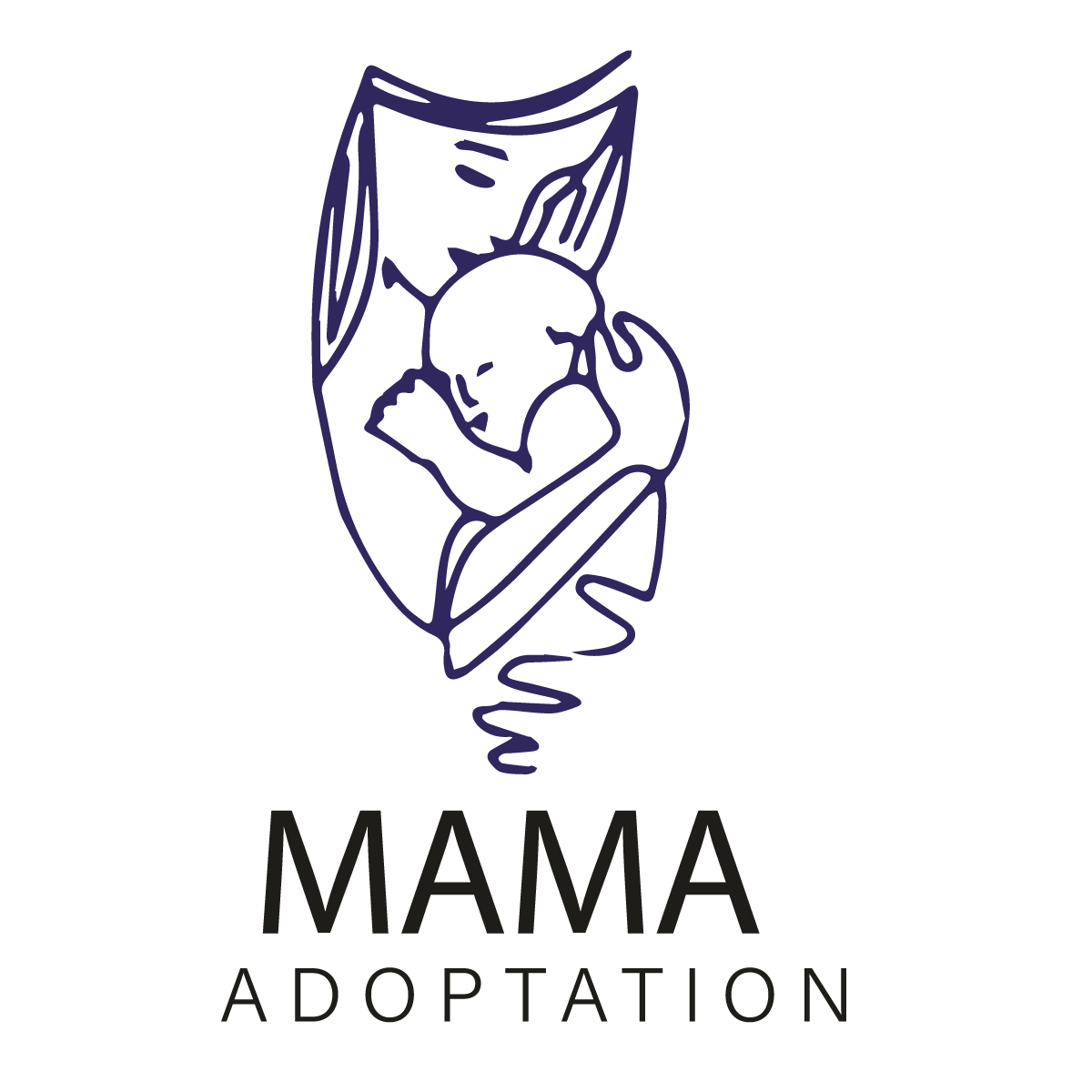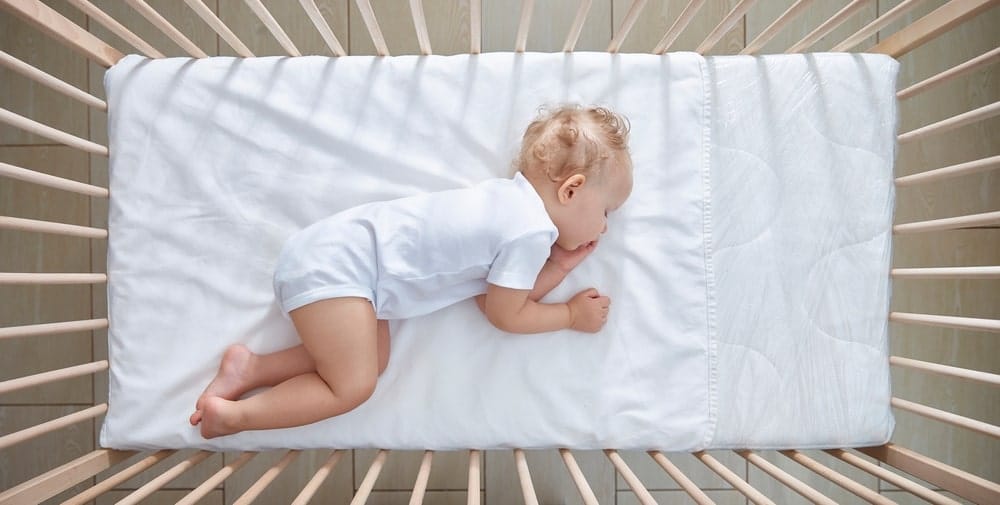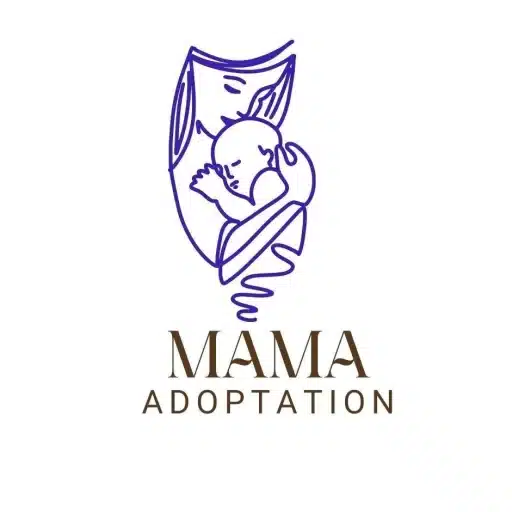Babies love to sleep on their side but parents are always worried and wonder Is it safe for babies to sleep on their side? It is a vital phase of human growth and development. Babies often develop a liking for lying on their sides, which raises questions Is it safe for babies to sleep on their sides?! In this baby sleep expert guide, we will understand the concerns and queries associated with parenting and hence help make informed decisions on the baby’s sleep position.
- Baby Sleeps On Side: Sudden Infant Death Syndrome (SIDS)
- Is It Safe For Babies To Sleep on One Side?
- Why Side Sleeping Is Not As Safe As Back Sleeping For Babies?
- Harlequin Color Change Caused By Side Sleeping:
- Preventing Flat Head Syndrome:
- Addressing the Risk of Torticollis:
- Exploring Concerns About Choking:
- The Importance of Varying Your Baby's Sleep Positions:
- Tips For Preventing Your Baby From Sleeping On Their Side:
- When Can Babies Safely Sleep on Their Sides?
- What to Do If Your Baby Rolls to Their Side During Sleep?
- Wrapping-Up
- Frequently Asked Questions:
Baby Sleeps On Side: Sudden Infant Death Syndrome (SIDS)
Sudden Infant Death Syndrome (SIDS), commonly referred to as “the thief of the night,” is a very serious and emotional potential threat faced by every parent. The mysterious situation refers to how a baby who looks perfectly fine could suddenly die while sleeping, breaking the hearts and minds of families who wish to make sense of what happened. The most important risk factor of SIDS is a baby sleeping on the side or stomach. The cause behind SIDS is not yet understood; however, there are some essential measures that parents can incorporate to reduce the risk. Here are some risk factors for SIDS:
Risk Factors For SIDS:
- Sleeping on the stomach: The risk of SIDS is highest when babies sleep on their stomachs. This is because it can make it difficult for them to breathe.
- Soft bedding: Soft bedding, such as pillows, blankets, and stuffed animals, can increase the risk of SIDS by blocking a baby’s airway.
- Smoking during pregnancy or around the baby: Smoking during pregnancy or around the baby increases the risk of SIDS.
- Prematurity: Premature babies are more likely to die from SIDS.
- Low birth weight: Low birth weight babies are more likely to die from SIDS.
- Multiple births: Babies born as twins, triplets, or other multiples are more likely to die from SIDS.
- Male sex: Male babies are more likely to die from SIDS.
- American Indian or Alaska Native race: American Indian or Alaska Native babies are more likely to die from SIDS.
Also Read: 11 Month Old Sleeping (Too Much, Not Enough, & Other Problems!)
Tips to Reduce the Risk of SIDS:
Here are some other tips to help reduce the risk of SIDS:
- Avoid smoking during pregnancy and after birth.
- Breastfeed your baby if possible.
- Keep your baby’s sleep environment safe. This means using a firm mattress and avoiding soft bedding, such as pillows, blankets, and stuffed animals.
- Room-share with your baby for the first 6 months.
By following these tips, you can help reduce the risk of SIDS and keep your baby safe while sleeping.
Is It Safe For Babies To Sleep on One Side?
As a parent, we are always looking for the safest and most comfortable approaches to offer our beloved babies the best care possible. Your baby may sometimes indicate an inclination to sleep on their side. This might leave you wondering whether it is safe for them. The answer is No. No, it is not safe for babies to sleep on their side. It is especially dangerous for babies under 4 months because they haven’t developed control over their head and neck muscles. According to the American Academy of Pediatrics (AAP), most babies sleep on their backs until they are one year old. Sleeping on the back is the safest position for babies to sleep and it reduces the risk of SIDS.
Why Side Sleeping Is Not As Safe As Back Sleeping For Babies?
There are a lot of reasons due to which side sleeping is not as safe as back sleeping. When a baby is sleeping on the side their head can fall forward which can block their nose and mouth making it difficult to breathe for them. Most of the time when babies are sleeping on their side their face is pressed against the mattress. The mattress can trap heat and cause overheating which is a risk factor of SIDS. Also, sleeping on the side can increase the risk of flat head syndrome and a twisted neck. However, sleeping on the back can prevent all these risk factors and improve the airflow of the baby. The baby also has the freedom to move their limbs and hands freely which encourages motor development.
Harlequin Color Change Caused By Side Sleeping:
Understanding why it can be dangerous to place your baby in bed on their side requires going into a lot of detail. Harlequin colour change may sound strange, but it is an interesting occurrence. It’s when your child’s skin turns red when he or she is lying on one side. This funny but harmless change is what your baby’s body does to cope with the pressure, and it’s normal. Parents need to know that this colour change is due to the side-sleeping baby and that it is just a part of their day-to-day activities.
Preventing Flat Head Syndrome:
However, there is a concern that may result from putting babies on one side, which is flat head syndrome. This development of a flattened spot, or positional plagiocephaly, is caused by pressure in one fixed position over the baby’s head. One should be cautioned of this danger, but several ways can be used to minimize it. If you do this gently, your baby’s head adjustment during sleep, giving them some supervised tummy time when they are awake and ensuring that the crib or sleep surface is firm can make quite a difference. In effect, it enables us, as parents, to prevent flat-head syndrome and create comfortable conditions for our babies.
Addressing the Risk of Torticollis:
Safety issues when one sleeps on their side also include torticollis. Torticollis is a condition characterized by tightness of the neck muscles leading to the tilting of your baby’s head to one side. The same thing can take place when babies often lie facing the same direction when sleeping. It’s a term that sounds disturbing, but the best way is to prevent it or treat it. You can confidently and surely address this risk by ensuring that your baby has a wide range of head positions during normal waking hours and consulting a healthcare professional if there are any problems.
Also Read: How Long Can My Baby Sleep in a Bassinet
Exploring Concerns About Choking:
Parents are worried about choking during their baby’s sleep as a major concern. However, we naturally worry for their safety when they sleep by their sides. Though there is a risk of choking, it’s important to note that it’s minimal, and most parents let their babies sleep on their side. Knowing it is a risk should make you wary and take preventive measures against it.
The Importance of Varying Your Baby’s Sleep Positions:
Life without variety makes one bored, and this applies to a baby’s sleep, where one should vary the ways used while putting a baby to sleep. No word can overemphasize the importance of shifting a baby’s sleep position. Prevention of flat heads is not the only issue; healthy motor development also needs consideration. Softly swapping your baby’s position from time to time allows him or her to discover new ways of sleeping and feel safe and calm. Similarly, your baby will get an opportunity to experiment with sleep in different positions to ensure that their sleep patterns are diverse and exciting, like in life.
Tips For Preventing Your Baby From Sleeping On Their Side:
For every parent, the utmost assurance of their baby’s safe sleep is what they want. Do you sometimes have that nagging feeling in your mind as to whether your child’s preferred sleep position is safe and comfortable? This section will take you into the realm of infant sleep, where we will look at some important precautions to avoid side sleeping and Tips for preventing your baby from sleeping on their side.
1- Placing Your Baby on Their Back During Sleep:
Think of the quiet moment when you lay the baby flat on the back before sleep time. That gesture is just filled with love and care for them so that they know they are entering a universe of safety and peace. This sleep position recommended by pediatric experts decreases the chances of Sudden Infant Death Syndrome (SIDS) and offers your baby’s airway open and free. They should always be put into their tummies while sleeping. This way, they can develop their limbs naturally.
2- Avoiding Unnecessary Support Structures in the Bed:
Ensuring the serenity of the baby’s sleeping area is very important to its health. It’s almost like clearing your baby’s space from anything that may disturb sleep heaven. This implies not using support structures or pillows in the crib or bed. These may be reassuring, but they might have unintentionally harmful effects on your baby. Therefore, you create a small and safe environment without distractions for your babies to sleep in. This simplicity allows both you and your child to sleep with confidence.
3- The Dangers of Sleep Positioners and Wedges:
It’s high time for us to discover the hidden risks associated with sleep positioners and wedges. Such commodities, described as aids for sleeping better, may appear useful but contain hidden hazards. It should not be complicated for your baby to sleep, and the baby should only have what is needed. This way, your kid will sleep without any danger because you avoid these objects. However, simplicity and minimalism in the sleep environment will provide your baby with the most security.
4- Swaddling Considerations to Minimize the Risk of Rolling Over:
Wrapping your baby in swaddling is like hugging the baby in its mother’s warm embrace. It is an ancient idea that can make your baby feel comfortable, almost like it would when they were inside you. Nevertheless, one should practice caution when swaddling the child, making sure that it is loose enough to enable movement of the hips and legs. This significantly reduces the risk of your baby turning over onto his or her side or stomach in sleep without losing that much-needed feeling of comfort that babies typically seek out to feel safe. Swaddling, when done correctly, offers the best of both worlds: security and safety.
Also Read: SITBACK Method: A Guide to Taking Cara Babies for Better Sleep
When Can Babies Safely Sleep on Their Sides?
Side sleeping is the greatest milestone in your baby’s sleep journey, and you must have been wondering when it is appropriate to start practicing it. Whether your baby should be allowed to sleep on their side is determined by their developmental milestones. Muscle strength increases as infants mature, and they can hold their heads up and maintain control of their neck movements. However, a lot of babies usually begin rolling over confidently from their backs to the other side and again after reaching about six months or 1 year. With this newfound mobility, we can consider it to have been a very crucial shift in their sleeping patterns.
One should note that attaining the age of six months is a guideline, and each baby achieves developmental milestones at their own pace. However, some could reach these motor skills early, while others may delay getting them. Hence, as a parent, you should be watchful about monitoring your baby’s growth against the background of their personal development. Always seek advice from your paediatrician if you are unsure what time is safe for your baby to sleep by their side.
However, at all times, safety should be a priority so that your child is in a safe place when transitioning to side sleeping. They should also still adhere to the safe sleep guidelines by having a firm mattress and without any loose bedding, pillows, or stuffed animals in the crib or sleep space, respectively. By watching over your child’s milestones and making sure that the baby crib is also safe, you will be able to determine when it is a good time for your baby to start side sleeping.
What to Do If Your Baby Rolls to Their Side During Sleep?
If your baby rolls to their side during sleep it is an indicator of your baby’s growing strength and motor skills, safety precautions should be taken. This may suggest that the baby is gradually learning to control their body movements by rolling over. Therefore, the best practice would be to keep putting your baby on their back when it comes time to lay them down for a nap. Nevertheless, after they turn over themselves, there is mostly no need to remake them into a back position.
However, your baby’s safety continues even when it starts rolling over. Ensure that there are no hazards in the crib or sleeping space. Get rid of any loose sheets, pillows, and stuffed toys, and make sure the mattress is not as soft as a cloud. Also, steer clear of giving your baby a pillow, sleep positioners, or wedges that may confine them into one position, which they can move away from if they so desire. As your baby grows and develops, you will be reassured when they start to roll over in their sleep. Knowing this natural progression and creating a safe sleep environment allows you to keep their sleep comfortable and secure, so both of you can sleep in peace.
Wrapping-Up
As we conclude this guide, it’s essential to remember that, as parents, our journey is one of constant learning and adaptability. It’s through our dedication to understanding the details of safe sleep that we can provide the best for our little ones. The shared goal is to create a sleep environment that encompasses love, safety, and comfort, ensuring that our babies can rest peacefully and thrive. By embracing the knowledge and guidance offered here, you’re equipped to embark on this incredible parenting adventure with confidence, knowing that you’re providing the very best for your precious baby.
Frequently Asked Questions:
Why can’t babies sleep on their sides?
Babies are recommended to sleep on their backs to reduce the risk of sudden infant death syndrome (SIDS). The back sleeping position is considered the safest to maintain an open airway and minimize the risk of suffocation. Side sleeping can pose a risk as babies might easily roll onto their stomachs during sleep.
Is it OK for the baby to sleep on the side all night?
It’s not recommended for babies to sleep on their sides for the entire night. The American Academy of Pediatrics (AAP) advises placing babies on their backs to sleep for every sleep, including naps. This helps ensure a safe sleep environment and reduces the risk of SIDS.
Can babies sleep on the side if they do it themselves?
If a baby is capable of rolling onto their side independently, it’s generally considered okay. However, it’s crucial to initially place them on their backs to sleep. Once they can roll over on their own, you can let them find their comfortable sleep position. Still, it’s wise to regularly check on them during sleep to ensure they maintain a safe sleeping position.
Is it normal for babies to roll onto their sides when sleeping?
Yes, it’s normal for babies to start rolling over, usually around 4 to 6 months of age. Once a baby gains the ability to roll independently, they may naturally adopt different sleeping positions, including on their sides. While this is a normal part of development, the initial placement on their backs is crucial to establishing safe sleep habits.








